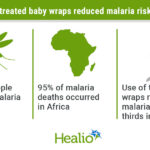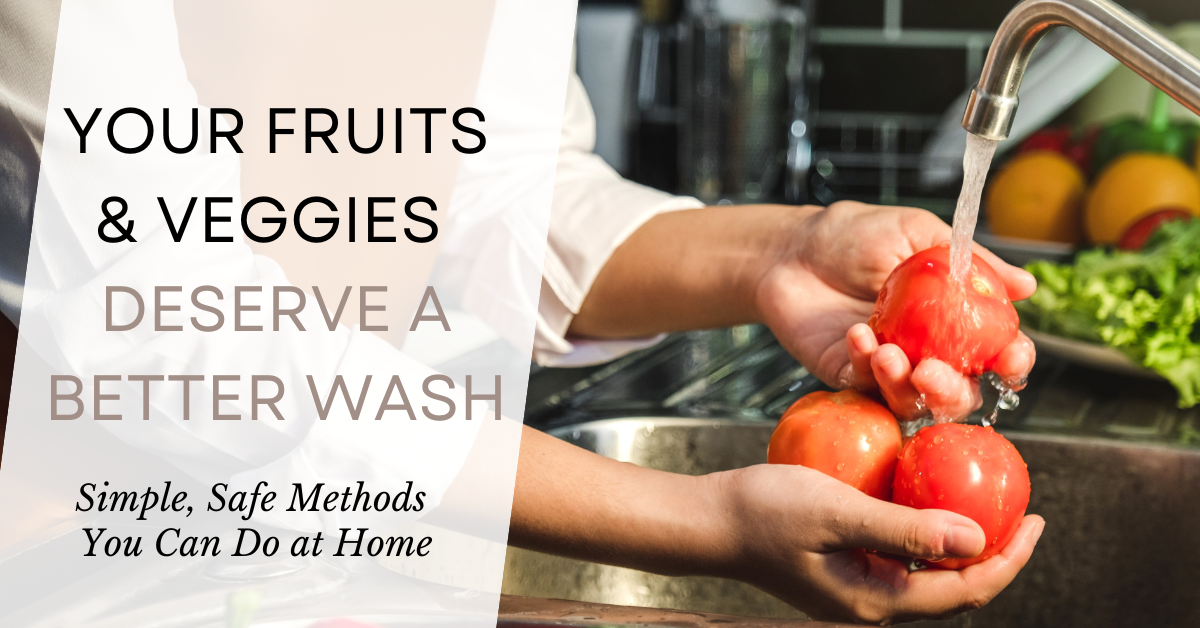Non-Toxic Ways to Wash Your Produce and Why It Matters
There are so many places where we could “clean up” our life, but to not get overwhelmed, start with one area at a time. A great place to start is how you clean your fresh fruits and veggies! Whether it’s a bundle of kale, spinach or fruit like apples and berries, washing your produce thoroughly is essential for reducing the toxic load on our bodies. Here’s how to wash your produce effectively without relying on harsh chemicals or commercial cleaners.
First, let’s get more into the “why” behind it. Even organic produce has pesticide residue, though most often at lower levels. Conventional produce often contains synthetic pesticides that have been linked to endocrine disruption, neurotoxicity, and cancer risk in long-term studies. The Environmental Working Group (EWG) annually lists the “Dirty Dozen” which are the fruits and vegetables most likely to carry the highest amounts of pesticide residues, even after washing. Be sure to review that list on their website to aim to but those 12 items organic the best you can.
So, what’s the best way to wash my produce? You don’t need synthetic or harsh commercial produce washes. Instead, use simple, affordable, and safe ingredients that you likely already in your kitchen!
- Vinegar & Water Soak – Mix 1 part distilled white vinegar with 3 parts water. Soak produce for 5–10 minutes, then scrub gently and rinse with cool water. Vinegar has antimicrobial properties that can help reduce harmful bacteria, mold spores, and some pesticide residues.
- Baking Soda Scrub – this is best for thick skinned produce like apples and potatoes. Sprinkle baking soda directly onto wet produce or mix with water to create a paste. Scrub with your hands or use a clean produce brush, then rinse thoroughly. Baking soda’s mild abrasiveness helps remove surface dirt and wax that tends to be on hardier produce items.
- Saltwater Soak – best for more fragile produce like leafy greens and berries. Dissolve 1 tablespoon of salt in 4 cups of cool water. Let produce soak for 5–10 minutes, then rinse well. Salt water can help dislodge insects, dirt, and some microbes. It’s especially useful for tightly bound leafy greens like brussels and cabbage, which can trap contaminants in their folds.
At Sanctuary, we emphasize doing your best to limit the toxic burden on your body and supporting the body’s natural detox systems. Taking a few extra minutes to clean your produce before consuming is a simple and mindful way to give your body a break and eat clean with a clearer mind that what you are putting in your body is nourishing you! For more nutrition related tips and tricks, check out our other nutrition blogs or schedule a consultation with your functional dietitian to help you restore joy through nutrition.
References
- Mostafalou, S., & Abdollahi, M. (2017). Pesticides: an update of human exposure and toxicity. Archives of Toxicology, 91(2), 549–599. https://doi.org/10.1007/s00204-016-1849-x
- Heaton, J. C., & Jones, K. (2008). Microbial contamination of fruit and vegetables and the behaviour of enteropathogens in the phyllosphere: a review. Journal of Applied Microbiology, 104(3), 613–626.
- Yang, T., et al. (2017). Effectiveness of Commercial and Homemade Washing Agents in Removing Pesticide Residues on and in Apples. Journal of Agricultural and Food Chemistry, 65(44), 9744–9752. https://doi.org/10.1021/acs.jafc.7b03118
- Beuchat, L. R. (2004). Vinegar as a functional food to reduce pathogenic bacteria on produce: a review. Food Microbiology, 21(6), 629–636.
Sanctuary Functional Medicine, under the direction of Dr Eric Potter, IFMCP MD, provides functional medicine services to Nashville, Middle Tennessee and beyond. We frequently treat patients from Kentucky, Alabama, Mississippi, Georgia, Ohio, Indiana, and more… offering the hope of healthier more abundant lives to those with chronic illness.

Registered Dietitian Nutritionist









